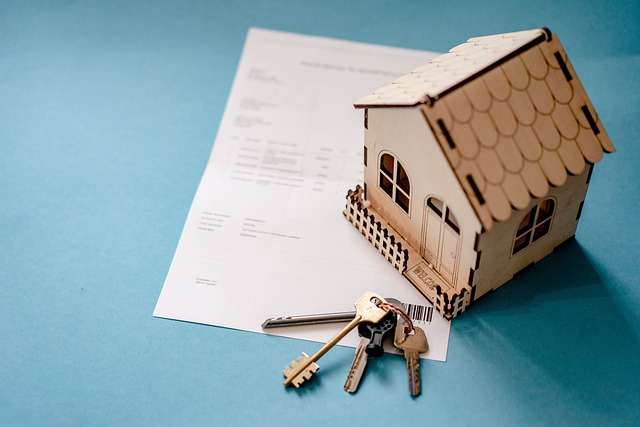Property insurance is a critical safety net, protecting homes and belongings from unforeseen hazards. Key factors influencing quotes include location, property type, value, security measures, and coverage needs. Three primary types cater to homeowners, renters, and businesses, with customizable policies available online for cost-effective solutions. Understanding terms like peril, coverage, and deductible is vital for informed choices. Efficient claim handling, regular policy updates, and staying aware of industry advancements ensure optimal protection.
Looking to protect your investment? Understanding Property Insurance Quotes is essential for any homeowner or business owner. This comprehensive guide breaks down everything you need to know about property insurance, from its basic coverage and the factors influencing quotes to choosing the right policy, navigating claims, and avoiding common pitfalls. By the end, you’ll be armed with knowledge to secure competitive property insurance that suits your needs.
Understanding Property Insurance: What It Covers and Why It Matters

Property insurance is a safety net that safeguards your most valuable assets—your home and its contents. It provides financial protection against unforeseen events such as fire, theft, vandalism, natural disasters, and more. Understanding what property insurance covers is crucial for ensuring you’re adequately protected. Typically, it includes coverage for the physical structure of your home, as well as personal belongings like furniture, appliances, and electronics.
Beyond material possessions, property insurance also offers liability protection. This means if someone gets hurt on your property or sues you due to property damage, your policy can help cover legal fees and settlements. Having the right property insurance isn’t just about peace of mind; it’s a responsible step to protect yourself from potentially devastating financial losses.
Factors Affecting Property Insurance Quotes: A Comprehensive Breakdown

When it comes to property insurance quotes, several key factors influence the cost and coverage offered by various providers. Understanding these factors is crucial for homeowners and business owners alike to secure the best possible protection for their valuable assets. Location plays a significant role; areas prone to natural disasters like hurricanes or earthquakes often have higher premiums due to the increased risk. The type and age of your property matter too; older buildings may require specialized coverage, while unique architectural features could impact pricing.
The value of your insurable property is another critical aspect. Insurers assess this based on construction costs, replacement value, and market trends. Higher-value properties typically demand more extensive coverage and thus reflect in the quotes. Additionally, your personal profile, including credit history and claims history, can affect rates. A solid credit score often leads to more favorable terms, while a history of frequent claims might result in higher premiums. Other considerations include security measures, such as alarms or cameras, which can lower risks and quotes, and the amount of coverage you choose, with higher deductibles usually leading to lower monthly costs.
Types of Property Insurance Policies: Choosing the Right Fit for Your Needs

When it comes to protecting your property, understanding the different types of property insurance policies is crucial. The three main categories include: 1. Homeowner’s Insurance: This covers residential properties against damages from events like fires, theft, vandalism, and natural disasters (up to a certain limit). It also provides liability coverage, shielding you from financial loss if someone gets hurt on your property. 2. Renter’s Insurance: While similar to homeowner’s insurance, renter’s insurance is tailored for those who rent their homes. It protects personal belongings against theft or damage, offering peace of mind that your valuables are covered. 3. Commercial Property Insurance: Designed for businesses, this policy safeguards commercial properties, including buildings, equipment, and inventory, from various risks. It also includes business interruption coverage, ensuring financial stability during unexpected events.
Choosing the right property insurance depends on several factors: the value of your property, its location, and your specific needs. For instance, if you live in an area prone to natural disasters like floods or earthquakes, you might need additional coverage for these perils. Conversely, if you have valuable art collections or jewelry at home, ensure your policy includes sufficient coverage for them. Understanding these nuances will help you select a property insurance policy that fits your unique situation best.
How to Get Accurate and Competitive Property Insurance Quotes Online

Getting accurate and competitive property insurance quotes online is a straightforward process that can save you time and money. The first step is to compare multiple insurers’ offerings. Utilize dedicated comparison websites that gather data from various providers, allowing you to access a wide range of options simultaneously. These platforms simplify the task by asking relevant questions about your property, location, and desired coverage, ensuring precise quotes.
Next, ensure you provide honest and detailed answers during the quote request process. Inaccurate or incomplete information may lead to issues later if you need to file a claim. Additionally, take advantage of online tools that enable you to customize your policy parameters, such as deductibles and coverage limits. This level of control helps tailor the insurance to fit your specific needs while keeping costs competitive.
Decoding the Jargon: Key Terms and Conditions in Property Insurance Policies

When shopping for property insurance, understanding the policy’s terms and conditions is crucial. Property insurance jargon can be complex, with various clauses that significantly impact what’s covered and what’s not. Familiarize yourself with essential terms like “peril,” which refers to specific causes of damage or loss, such as fire, theft, or severe weather. “Coverage” denotes the extent of protection offered by the policy, while “deductible” is the amount you agree to pay out-of-pocket before insurance kicks in.
Be sure to read descriptions carefully; for instance, “all-risk” coverage promises broad protection against most unforeseen events, whereas a policy with specific perils listed may exclude certain natural disasters or accidents. Additionally, pay attention to exclusions—items or circumstances not covered by the policy. Knowing these details empowers you to make informed choices, ensuring your property is adequately safeguarded.
Maximizing Benefits: Tips for Effective Property Insurance Claim Handling

When it comes to property insurance, maximizing benefits through effective claim handling is paramount. The process should be seamless and efficient to ensure policyholders receive fair compensation for their losses promptly. One key tip is to keep detailed records of all damage, including photographs and written descriptions. This documentation not only helps in the claims assessment but also serves as a reference during any potential disputes.
Additionally, staying in communication with your insurance provider throughout the process is crucial. Regular updates on repairs, estimated costs, and timelines for completion can streamline the claim settlement. Understanding your policy terms and conditions is another essential aspect. Knowing what’s covered and what’s not can prevent delays or disagreements over compensation, ensuring a smoother experience in navigating your property insurance claim.
Common Pitfalls to Avoid When Buying Property Insurance

When buying property insurance, there are several common pitfalls to avoid in order to ensure you’re getting the best coverage for your needs. One major mistake is not thoroughly understanding what’s covered and what isn’t. Property insurance policies can be complex, with different levels of coverage and exclusions. Always read the fine print and ask questions about anything unclear. Failing to assess your specific risks can also lead to inadequate coverage. Consider factors like location, climate, and the value of your possessions when selecting your policy limits and deductibles.
Another pitfall is comparing only on price. While cost is a significant factor, it shouldn’t be the sole determiner. Different insurers offer varying levels of service, claims handling efficiency, and additional benefits. Opting for the cheapest option without evaluating these aspects could leave you underinsured or facing challenges when making a claim. Additionally, don’t neglect to update your policy regularly as your property’s value, risks, or personal circumstances change. This ensures that your insurance stays relevant and provides adequate protection.
The Future of Property Insurance: Trends Shaping the Industry

The future of property insurance is being shaped by several compelling trends, driven largely by technological advancements and evolving consumer expectations. One prominent trend is the increasing adoption of digital platforms and data analytics. Insurance companies are leveraging advanced algorithms and artificial intelligence to process claims more efficiently and accurately, offering personalized quotes tailored to individual risks. This shift towards digitization enhances accessibility, allowing policyholders to obtain property insurance quotes online, compare options, and purchase policies conveniently from home.
Another significant trend is the growing demand for specialized coverage. As climate change intensifies, there’s a rising need for property insurance policies that address specific perils like extreme weather events, natural disasters, and environmental liabilities. Additionally, with an increasing number of smart homes equipped with IoT devices, insurers are adapting to include cyber risks in their policies, recognizing the growing threat of data breaches and hacking attempts. These industry shifts reflect a proactive approach to meeting modern challenges, ensuring that property insurance remains relevant and robust in an ever-changing world.
